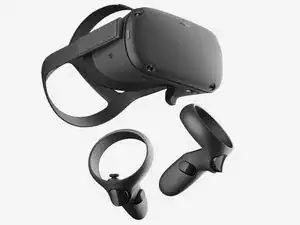Background and Identification
The Oculus Quest is a virtual reality (VR) headset developed by Oculus VR and released in May 2019. Oculus VR is a division of Facebook, Inc. The Oculus Quest can function as a standalone VR headset, meaning it includes all necessary components within the headset worn by users. It can also be used as a tethered headset, meaning it displays a virtual reality experience from another device like a video game console. The Oculus Quest can be connected to a computer with a USB cable and used with PC virtual reality video games.
The Oculus Quest runs on Android 7.0. It has a battery life of approximately two to three hours. VR headsets include a stereoscopic head-mounted display that provides individual images for each eye, motion-tracking sensors, and stereo sound to produce an immersive, realistic experience. The Oculus Quest headset includes 1440 by 1600 pixels per eye. It uses two diamond Pentile OLED displays and features physical interpupillary distance (IPD) adjustment, which customizes the distance measured between the centers of the pupils of the eyes.
The Oculus Quest VR headset includes two six-degrees-of-freedom controllers that control actions within games and simulations. The Quest uses the second-generation Oculus Tough controllers used by the Oculus Rift S. VR headset. The tracking ring in these controllers is located at the top of the controller, whereas in older Oculus Touch controllers the tracking ring was located on the back of the controller.
Technical Specifications
- Display panel: OLED
- Display resolution: 1440 x 1600 per eye (Oculus Rift had 1080×1200 per eye)
- 72Hz refresh rate
- Qualcomm Snapdragon 835 processor
- 4GB RAM
- Lithium-ion battery with 2-3 hours playtime, depending on what you are playing
- 6 degrees of freedom head and hand tracking
- Two touch controllers
- Weight: 571g (Rift is 470g)
Additional Information
- Oculus Quest Official Product Page
- Forbes: Oculus Quest Specifications
- The Verge: Oculus Quest Review
- Wikipedia: Oculus Quest
